India pale ale (IPA) is by far the most popular type of craft brew in the United States, and commercial brewers have responded by coming up with a variety of “spin-offs” of American IPA. One variation is wheat IPA, of which one of the earliest and most popular examples is Lagunitas’ Little Sumpin’ Sumpin’. The brewery describes it as “A filtered pale wheat ale that is great for both IPA and wheat beer fans.” Wheat IPAs combine the hoppy goodness of an American IPA with the crisp, bread-like, “zing” from an American-style wheat beer into one very tasty beer. (My wife loves the Lagunitas brew.) Here’s how to brew one at home.
Different Yeast Strains Yield Different IBUs
Late last year, I attended the Dixie Cup in Houston. One of the speakers was Dr. Chris White, the founder of White Labs Yeast. He spoke about several things White Labs was doing, including opening a tasting room, but for me the most interesting part of his talk involved some experiments with yeast strains and IBUs.
White and his staff made up a standard wort, with a known (calculated) level of bitterness, and fermented aliquots of it with each of the White Labs strains. Each beer was then analyzed for its actual level of bitterness (in IBUs). He then compared the measured IBUs to the predicted IBUs for each strain. If the two were equal, the beer was given a score of 1. If the measured IBUs were less than the predicted IBUs, the beer received a score between zero and one. For example, if the beer was expected to have 100 IBUs, but only had 80, the beer would be given a 0.8. (Note: the experiment wasn’t done with 100 IBU beers, I just used that number as an example because it’s easy to see how the proportions worked out.) And if the beer was more bitter than predicted, the beer received a number over 1.
Making Malty Beers (I: The Malts)
My introduction to craft beers came in the early ‘90s in Boston, Massachusetts. I was a graduate student at Boston University. For a few years I lived near the Sunset Grill, a beer bar with literally hundreds of types of beer in bottles and a huge tap list. I used to go there as often as I could and try different beers. With so many beers that were new, I always ordered something different each time.
One night, I ordered a beer called Hexenbräu — a dark lager that was a total malt bomb. It had a rich, malty flavor — accentuated by some sweetness — and I resolved that next time I went to Sunset, I was going to break my “rule” and order that beer again because it was so damn good. Unfortunately, the next time I went, it wasn’t on the menu and I never saw if it offered anywhere again. I’ve later learned that it was brewed by Hürlimann, the same brewery that originally brewed Samichlaus, and it is no longer produced.
One of my first goals as a homebrewer was to recreate this beer, but I didn’t know where to start. When I tried to make a malty beer, it would turn out decent — but without the big malt character found in that beer (or a good German doppelbock). It was only recently that I figured out how to get the type of malt character.
In this article, I’ll explain how to brew a malty beer. This will include beers with a moderate malt intensity through total malt bombs. Whether you want to brew an intensely malty beer, or simply to accentuate the malt character in one of your existing brews, the information here should allow you to do that.
Tannins in the Boil
As I mentioned in the article on tannins in the mash, most of the tannins in your beer come from malt and are extracted during the mash. The major procedural thing you can do to avoid extracting excessive amounts of tannins is not to oversparge — do not continue collecting wort when the pH rises above 5.8. (This assumes your mash is at 170 °F (77 °C) at the end of wort collection.) If you don’t have a pH meter, the cutoff point for wort collection usually coincides with the specific gravity of the final runnings dropping to 2–3 °Plato (SG 1.008–1.012). You can also cool down a sample of your final runnings and taste them. You will feel the astringency increasing near the end of wort collection. (Astringency is a mouthfeel, not a taste.)
Hops also contribute tannins to your beer. However, if your sweet wort — the wort you collected from your lauter tun, not yet hopped — is OK, you really don’t have to worry further much about tannins. And this is good, since your only real way of controlling hop-derived tannins is to change the amount of hops you use.
Before we go on, recall that tannins are water soluble. Anytime tannic plant material is in an aqueous environment, tannins are dissolving into the liquid. Heat, pH and time are the major variables in tannin extraction. In the mash, the combination of temperatures 170 °F (77 °C) and over, coupled with a pH of 5.8 or greater, leads to tannins being very soluble. However, those conditions are not an “off and on” switch. In a mash at 160 °F (71 °C) at a pH of 5.6, tannins would dissolving into the wort, only at a much lower rate. Finally, recall that tannins are always present in beer — they are only a problem if their concentration is high enough to cause astringency.
Tannins in the Mash
Tannins are polyphenols found in a wide variety of plants, distributed among various tissues. In a later article, I’ll discuss the basic chemistry of the tannins relevant to brewing. (The types of tannins that end up in beer from the malt are different from those that originate in the hops.) In this article, however, we’ll treat them as a group because they are all related chemically, the factors that affect them are the same, and the consequences if they get in your beer are the same. I’ll discuss tannins extracted in the mash today, and cover tannins in the boil over the weekend.
Black IPA
If you want to brew a beer that tastes like an American-style IPA, but with a darker color, I have two words for you — black malt. Black malt, sometimes called black patent malt, is the darkest of the roasted malts, usually measuring around 500 °L. Given the details of how the maltster vents the kiln during roasting, almost all of the volatile aromatic compounds from this malt are lost. (Take a handful of black malt in one hand and a handful of roasted barley — unmalted bakley roasted to the same color — and smell the difference.) If you want to add color to a beer, but little aroma or flavor, black malt is the way to go.
There are also dehusked black malts available. These dark malts are the same color as black malt, but yield less roasted bitterness. This makes them the ideal choice for a black IPA. Dehusked black malts go by a variety of names. Briess calls theirs Blackprinz malt, Dingemans calls their debittered black malt. Weyermann calls theirs dehusked Carafa III. [Read more…]
Boost Your Hop Aroma (Part 3 of 3: Aroma Extract)
Adding hops to the fermenter lets you bypass the boil and fermentation so the volatile oils that give beer their wonderful hop aroma won’t be vaporized by heat or expelled by the outgassing during fermentation. In a previous article, I discussed dry hopping. In this article, I’ll discuss making a homemade extract of hop oils and adding it to your beer.
Boost Your Hop Aroma (Part 2 of 3: Dry Hopping)
Adding hops to the fermenter is a great way too infuse your beer with aroma from the hop oils. Unlike oils extracted during the boil, oils added post-fermentation won’t be vaporized by heat or expelled by the outgassing of fermentation. There are two ways to boost your hop aroma by adding oils in the fermenter — dry hopping and adding an aroma extract. In this article, I’ll discuss dry hopping. In the next — which I’ll post later today — I’ll discuss making a homemade extract of hop oils and adding it to your beer.
Boost Your Hop Aroma (Part 1 of 3)
Hoppy beers are all the rage these days, and brewers are always looking for ways to get more hop character in their beer. I’d like to discuss maximizing hop aroma, by focusing not only on ways to add hops to beer, but how hop character is removed from beer during the brewing process. I’d also like to propose another method of adding hops to beer. (This isn’t completely new. I’ve mentioned it before, but it isn’t well-known or widely used.)
We all know of a variety of ways to add hops to beer. You can add hops before the boil (first wort hopping). You can add hops during the boil. You can add hops after the boil (in the whirlpool or filter your wort through a hop jack). You can add hops in the fermenter or keg (dry hop). You can push your beer through a Randall. You can even add hops in your mash. But let’s take a look at what happens to the compounds from the hops as the brewing process continues.
Why Partial Mash? (Mashing vs. Steeping)
I’m a big fan of partial mashing. For all-grain brewers who usually brew outside, it allows you to get out of the elements during inclement weather and brew in your kitchen. For extract brewers, there are a host of benefits.
Adding base malts to your extract recipes increases the aroma of base malt, which is sometimes lacking in malt extracts. And, it allows you to use the many different kinds of base malts out there and base malts made by different maltsters. More ingredients to choose from gives you the opportunity to more finely tweak the flavor of your beers.
A partial mash also allows you brew a lighter-colored beer, compared to the extract-plus-steeping-grains method, if you want to. In addition, if you’re trying to make a dry beer, you can use the enzymes from the partial mash to raise the fermentability of your wort. Finally, you can add small amounts of starchy adjuncts to your beer, without having it turn hazy. Starchy adjuncts include flaked (or torrified) unmalted grains such as flaked maize, flaked barley, flaked wheat, torrified wheat, rolled oats, etc. [The weight of the starchy adjuncts should be 30% or less of the total weight of the grains, excluding any malt extract, and paired with a lightly-kilned base malt with plenty of diastatic power (enzymes to convert starches) such as US 2-row pale malt or US 6-row pale malt.]
A small partial mash can be accomplished almost exactly as you would brew an extract recipe with steeping grains. The only procedural difference is you need to watch the temperature more closely and not “steep” the grains in too much water. It’s hard to think of any drawbacks to the method, although you might generate slightly more break material in your brewpot.
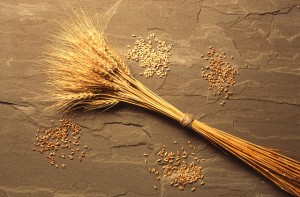
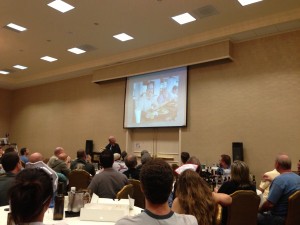
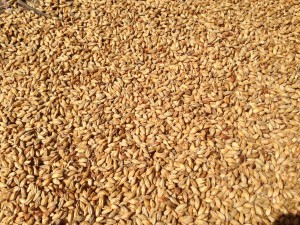


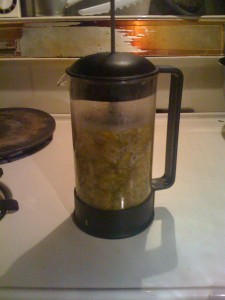

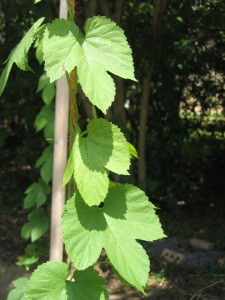
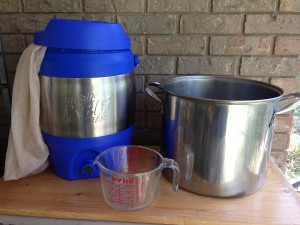

Recent Comments